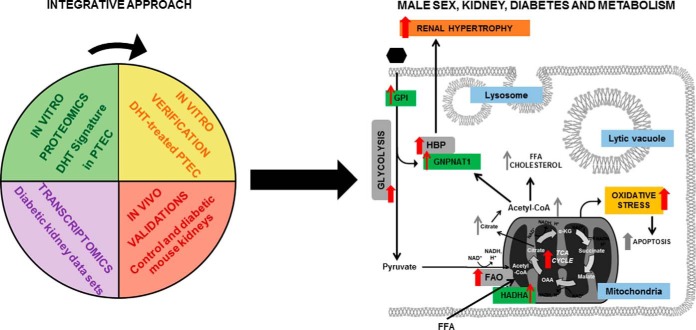Fig. 10.
Proposed scheme for the role of male sex on energy metabolism in the diabetic kidney. By integrating our proteomic findings with previous transcriptomics data using bioinformatics tools, and supported by the corresponding in vitro and in vivo validation studies, we propose a model of interconnected enzymes, metabolites, biological processes, and pathophysiological events increased by male sex hormones and diabetes within the renal tubule. Red arrows indicate effects of DHT or male sex relevant to diabetes and demonstrated in the present study. Gray arrows depict hypothetical connections that have not been investigated in the present work. Green boxes indicate validated proteins in our study. Gray and blue boxes indicate significantly enriched biological processes and cellular components in our gene ontology analysis, respectively. Yellow boxes indicate processes that emerged from our functional enrichment analysis. Orange boxes indicate physiological events triggered by impaired energy metabolism observed in DKD and accentuated by androgens in the present study. FFA, free fatty acids; α-KG, alpha-ketoglutarate; OAA, oxaloacetate; HBP, hexosamine biosynthetic pathway: FAO, fatty acid beta-oxidation.

